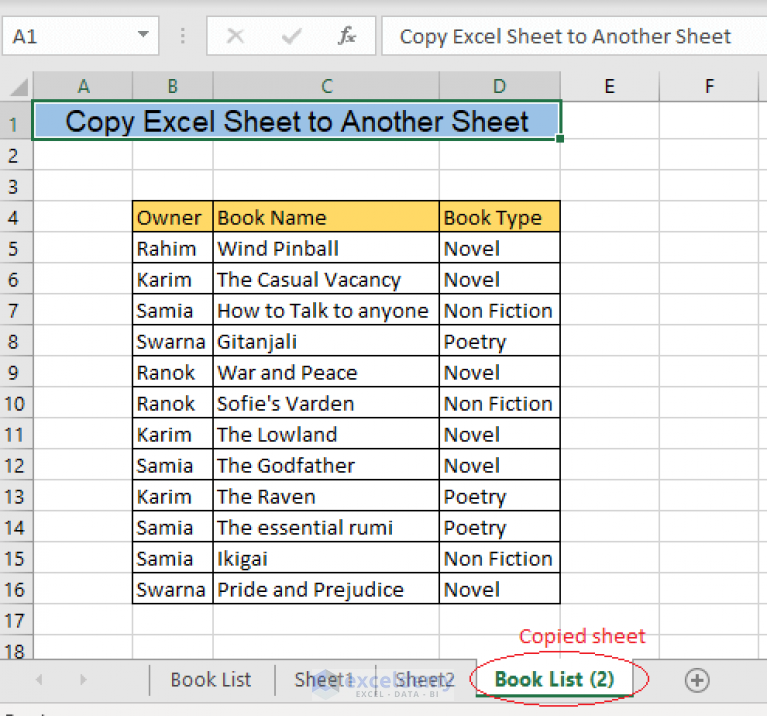3 Simple Ways to Specify Sheets in Excel

Exploring the Basics of Excel Sheet Management

Microsoft Excel, with its powerful features for data analysis, has become an indispensable tool for professionals across various industries. The software's ability to organize data into separate sheets allows for efficient data management. Knowing how to specify and manage these sheets is crucial for anyone looking to harness Excel's full potential. In this post, we'll delve into three simple yet effective ways to work with sheets in Excel. Each method serves different purposes and understanding when and how to use them can significantly streamline your workflow.
Method 1: Using the Sheet Name

Naming sheets in Excel provides a quick and intuitive way to navigate complex workbooks. Here's how you can manage sheets by their names:
- Selecting Sheets: Simply click on the desired sheet tab at the bottom of your Excel window.
- Renaming Sheets: Double-click the tab, or right-click and select 'Rename', to give your sheet a meaningful name.
- Navigating with Keyboard: Use Ctrl + Page Up or Ctrl + Page Down to cycle through sheets.
Using descriptive names for your sheets ensures that you and others can quickly identify the content, making collaboration more effective.

📌 Note: Excel has a character limit of 31 for sheet names, so keep them concise but descriptive.
Method 2: Leveraging Sheet References in Formulas

Excel allows you to reference sheets directly in formulas, which can be very powerful when dealing with data across multiple sheets. Here's how you can use sheet references:
- Direct Reference: You can reference another sheet by prefixing it with the sheet name followed by an exclamation point. For example,
='Sheet2'!A1would reference cell A1 from Sheet2. - External Reference: If referencing cells from a different workbook, use the workbook's name within square brackets before the sheet reference, like
[Workbook1.xlsx]Sheet1!A1.
This method is crucial for creating summary sheets or dashboards that pull data from various sources. Here's a simple example:
| Sheet Name | Reference |
| Sheet1 | =A1 |
| Sheet2 | =SUM('Sheet1'!A1:A10) |

🛠 Note: Using '!' in sheet references ensures Excel knows to look in the sheet you've specified.
Method 3: Using VBA to Manage Sheets

Visual Basic for Applications (VBA) in Excel can automate sheet management, especially when dealing with numerous sheets or complex operations. Here's how you can use VBA for sheet management:
- Creating a New Sheet: Use
Worksheets.Add().Name = "NewSheet"to add a new sheet and name it in one go. - Deleting Sheets: You can remove sheets using
Worksheets("SheetName").Delete. Remember to handle errors or protect sheets from accidental deletion. - Automating Navigation: With
Sheets("SheetName").Activate, you can move directly to a specific sheet.
VBA scripting allows for customization and automation beyond Excel's built-in features, making it an invaluable tool for advanced users.

🔍 Note: Running a VBA macro can change settings temporarily, so be sure to save your workbook settings or state beforehand.
Understanding and utilizing these three methods for specifying sheets in Excel can dramatically improve your efficiency. Whether it's through simple naming conventions, complex formula references, or automation with VBA, Excel offers multiple avenues to achieve the same end goal: organized and accessible data. These techniques allow you to control your data environment, making data analysis and reporting a breeze. By mastering these methods, you'll unlock the true potential of Excel, transforming it from a mere spreadsheet application into a robust data management tool.
Can I rename an Excel sheet after it has been created?

+
Yes, you can rename any Excel sheet at any time by double-clicking the sheet tab or right-clicking and selecting ‘Rename’. However, remember that this can affect your formulas and references if they’re not adjusted accordingly.
What is the maximum number of sheets Excel can handle?

+
Excel 2013 and later versions can handle up to 1,048,576 sheets in a single workbook, limited by available memory and hardware resources.
Is VBA programming necessary to use Excel efficiently?

+
No, VBA is not necessary for everyday use. However, for advanced automation and customization, learning VBA can significantly enhance your ability to manage and analyze data in Excel.
How do I make my formulas automatically update if sheet names change?

+
Excel does not automatically update formulas when you rename sheets. However, you can use VBA to modify formulas or consider using indirect referencing techniques like =INDIRECT(“SheetName!A1”).
What are some best practices for organizing sheets in a large workbook?

+
- Use clear, descriptive sheet names. - Group related sheets together. - Utilize colors or icons for sheet tabs to categorize visually. - Keep a master summary or index sheet at the front of your workbook. - Use consistent data input methods across sheets for easier integration.